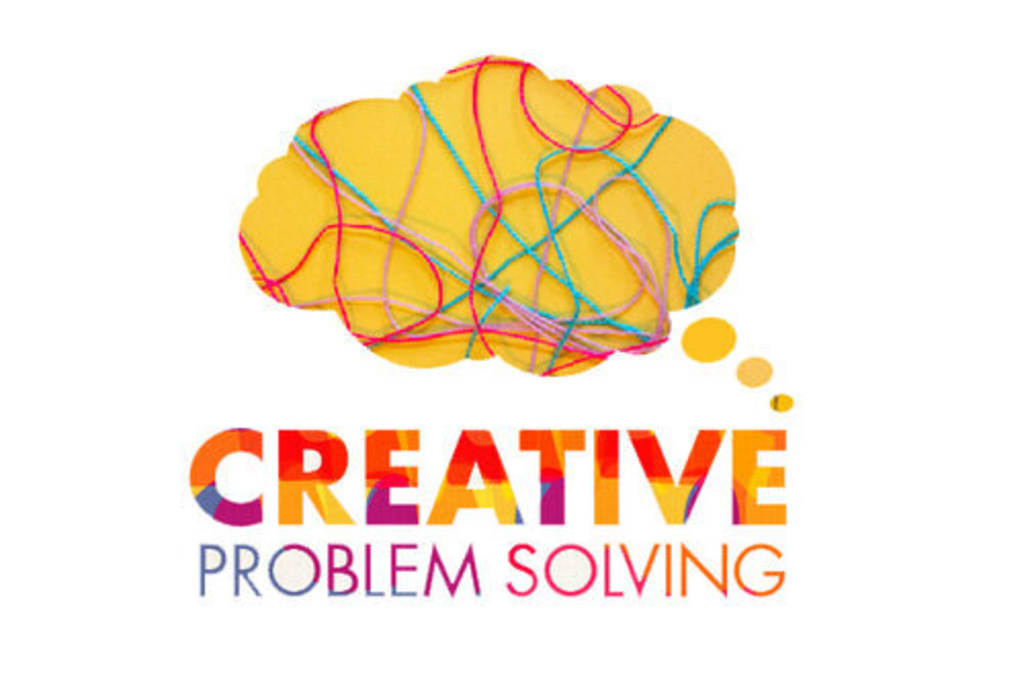The role of creativity in problem-solving and innovation
Unlocking Innovation: The Importance of Creativity in Problem-Solving

1. Introduction
Creativity is an essential aspect of problem-solving and innovation. In today's rapidly changing world, individuals and organizations must be able to adapt quickly to new challenges and opportunities. Creativity is the key to finding new solutions to complex problems and developing innovative products and processes that can drive growth and success. In this article, we will explore the role of creativity in problem-solving and innovation, and how individuals and organizations can cultivate and harness their creative potential.
2. Defining creativity
Creativity can be defined as the ability to generate novel and useful ideas, concepts, or solutions. It is the process of taking existing knowledge, skills, and experiences and using them in new and innovative ways. Creativity is not limited to the arts or creative industries. It is an essential aspect of all fields, including science, engineering, business, and technology.
3. The role of creativity in problem-solving
Effective problem-solving requires the ability to think critically and creatively. Creativity can help individuals to approach problems from different perspectives and generate new and innovative solutions. Some techniques that can be used to enhance creativity in problem-solving include:
a. Divergent thinking
Divergent thinking is the process of generating multiple ideas or solutions to a problem. It involves thinking beyond the obvious and exploring a wide range of possibilities. Divergent thinking can help to identify new and innovative solutions to complex problems.
b. Brainstorming
Brainstorming is a technique used to generate ideas in a group setting. It involves the free-flowing exchange of ideas without criticism or judgment. Brainstorming can help to stimulate creativity and generate a wide range of ideas that can be refined and developed further.
c. Visualization techniques
Visualization techniques involve using mental images or visual aids to enhance creativity. For example, creating a mind map or using diagrams or sketches can help to generate new ideas and identify potential solutions to a problem.
d. Overcoming mental blocks
Mental blocks can hinder creativity and prevent individuals from generating new and innovative ideas. Techniques such as mindfulness, meditation, or taking a break from a problem can help to overcome mental blocks and stimulate creativity.
4. The role of creativity in innovation
Innovation is the process of developing new or improved products, processes, or services that meet a need or solve a problem. Creativity is essential to innovation, as it enables individuals and organizations to develop new ideas and approaches to existing problems. Some ways in which creativity can facilitate innovation include:
a. Developing new ideas
Creative thinking can help to identify new opportunities and generate new ideas for products, services, or processes. By thinking beyond the obvious, individuals and organizations can develop innovative solutions to complex problems.
b. Improving existing products or processes
Creativity can also be used to improve existing products or processes. By thinking creatively about how to improve efficiency, quality, or customer experience, organizations can create new and innovative solutions that drive growth and success.
c. Encouraging experimentation and risk-taking
Innovation requires experimentation and risk-taking Creativity can help to facilitate experimentation and encourage individuals and organizations to take risks in order to develop new ideas and approaches. By embracing a culture of experimentation and risk-taking, organizations can create an environment where creativity can flourish and innovative ideas can be developed.
5. Creativity and teamwork
Collaboration and teamwork can be essential to unlocking creativity and innovation. By working together, individuals can combine their skills and knowledge to generate new ideas and solutions to complex problems. Collaboration can also help to foster a supportive environment where individuals feel comfortable sharing their ideas and taking risks.
6. Cultivating creativity
Creativity is a skill that can be developed and nurtured over time. Some ways in which individuals and organizations can cultivate creativity include:
a. Encouraging curiosity and exploration
Encouraging curiosity and exploration can help to stimulate creativity. By encouraging individuals to question assumptions and explore new ideas and approaches, organizations can create an environment that supports creativity and innovation.
b. Providing opportunities for play and experimentation
Providing opportunities for play and experimentation can help to foster creativity. By creating a culture that encourages experimentation and risk-taking, organizations can create an environment where individuals feel comfortable exploring new ideas and taking risks.
c. Challenging assumptions and encouraging questioning
Challenging assumptions and encouraging questioning can help to stimulate creativity. By encouraging individuals to question the status quo and challenge assumptions, organizations can create an environment that supports innovation and encourages individuals to develop new and innovative ideas.
d. Providing a supportive environment
Providing a supportive environment can also be essential to fostering creativity. By creating an environment that supports collaboration, risk-taking, and experimentation, organizations can create an environment where individuals feel comfortable sharing their ideas and taking risks.
7. Conclusion
Creativity is an essential aspect of problem-solving and innovation. By fostering creativity, individuals and organizations can develop new and innovative solutions to complex problems, drive growth and success, and create a culture that supports experimentation and risk-taking. By embracing creativity and cultivating a culture that supports it, individuals and organizations can unlock their full potential and achieve greater success in today's rapidly changing world.
8. FAQs
Q: Is creativity important in all fields?
A: Yes, creativity is important in all fields, including science, engineering, business, and technology.
Q: Can creativity be learned?
A: Yes, creativity is a skill that can be developed and nurtured over time.
Q: How can organizations foster creativity?
A: Organizations can foster creativity by providing opportunities for play and experimentation, encouraging questioning and challenging assumptions, and creating a supportive environment that supports collaboration and risk-taking.
Q: Can creativity be hindered by mental blocks?
A: Yes, mental blocks can hinder creativity and prevent individuals from generating new and innovative ideas.
Q: How can individuals overcome mental blocks and stimulate creativity?
A: Techniques such as mindfulness, meditation, or taking a break from a problem can help to overcome mental blocks and stimulate creativity.
About the Creator
Mahammad Azmal
Explore the lives of history's most influential figures on my channel! From scientists to leaders, discover the stories of famous individuals who shaped our world. Subscribe now!
Enjoyed the story? Support the Creator.
Subscribe for free to receive all their stories in your feed. You could also pledge your support or give them a one-off tip, letting them know you appreciate their work.






Comments
There are no comments for this story
Be the first to respond and start the conversation.